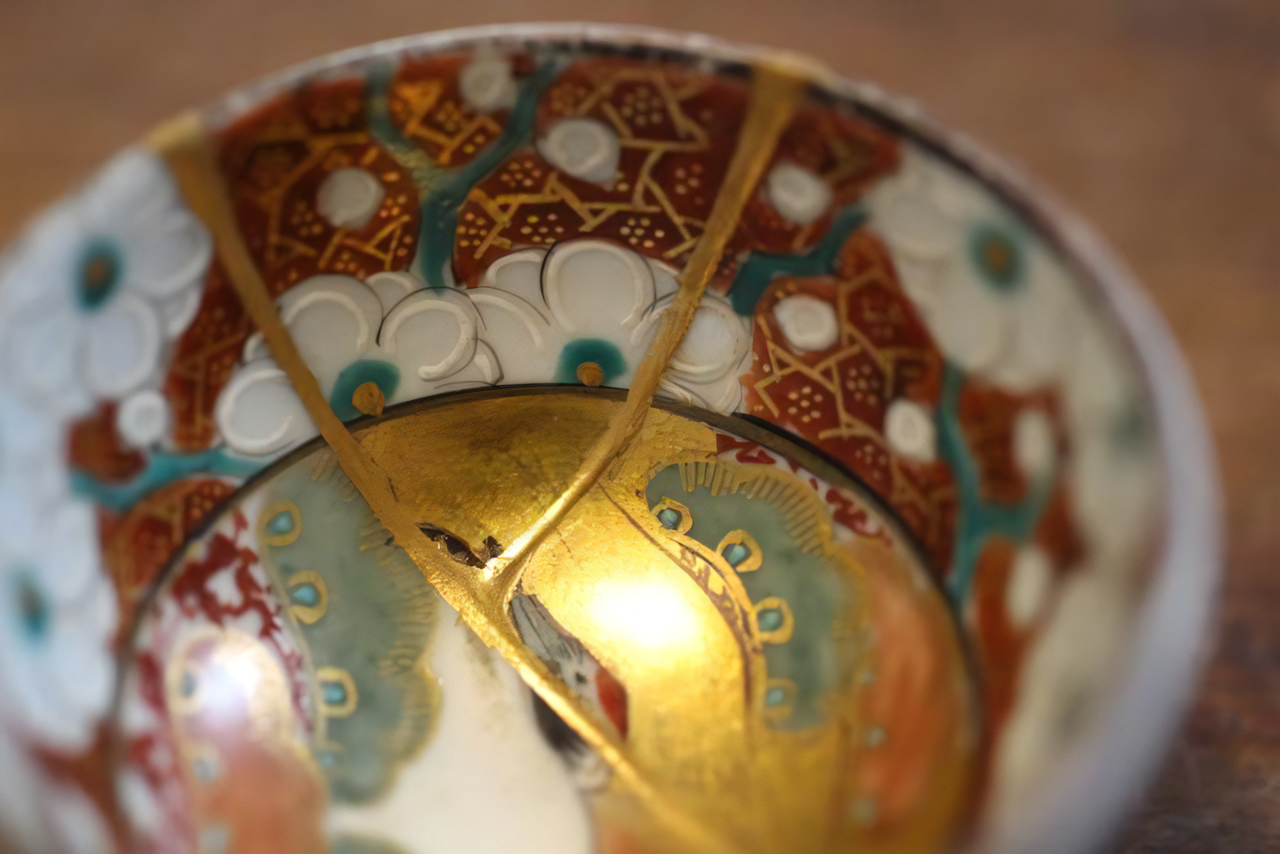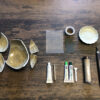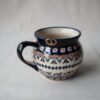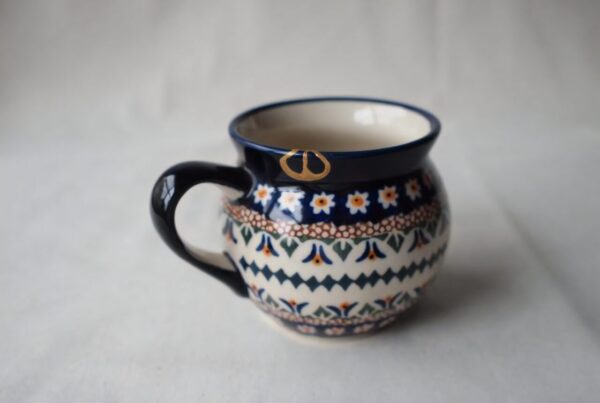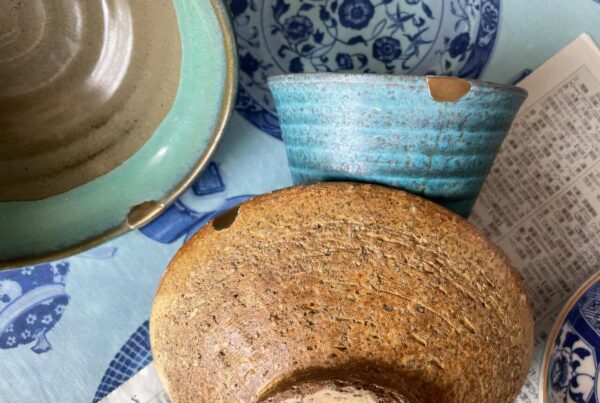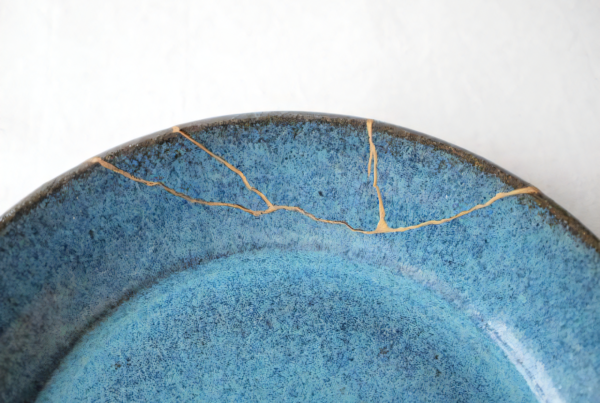Introduction
Many of us cherish our favorite pieces of pottery and dishes. However, accidents can happen, leading to these beloved items breaking. Before resigning yourself to throwing them away, why not consider the option of modern Kintsugi? This accessible method allows you to try traditional Kintsugi techniques, breathing new life into broken ceramics and adding a unique beauty.
This article will delve into the differences between traditional and modern Kintsugi, as well as the advantages and disadvantages of modern Kintsugi.
II.Traditional Kintsugi – Before Modern Kintsugi
Kintsugi is a traditional Japanese repair technique used primarily for fixing ceramics and lacquerware. This method involves adhering broken or cracked parts with lacquer and decorating the repair site with metallic powders such as gold or silver, accentuating the repairs beautifully.
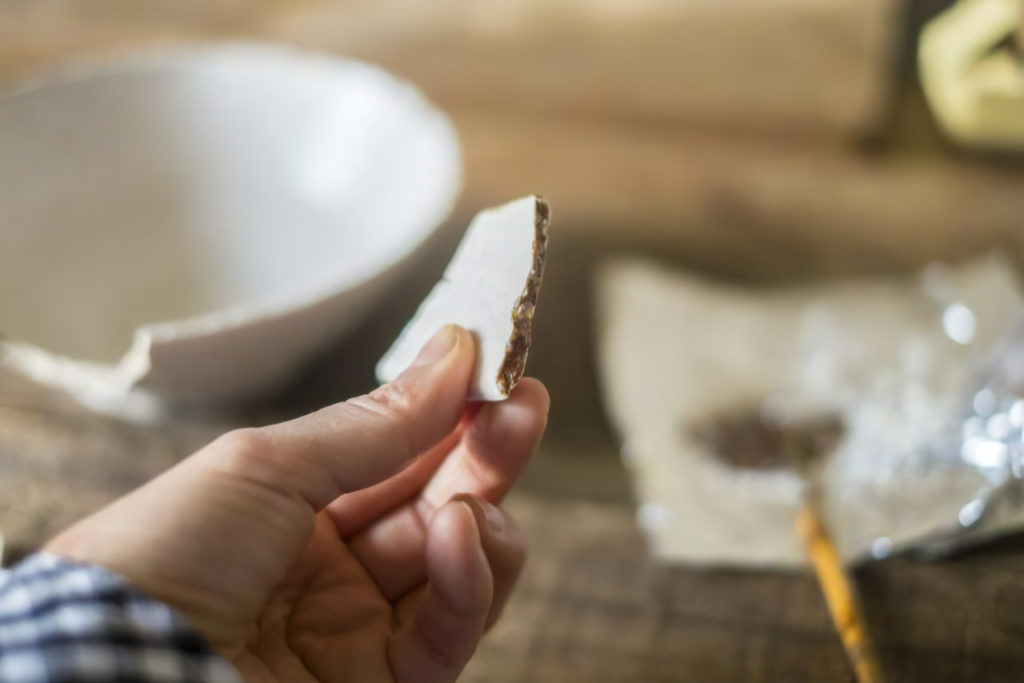 Unlike hiding the repair, Kintsugi highlights the scars, celebrating the item’s history and the passage of time as part of its character. This technique, deeply rooted in Japanese culture, symbolizes respect for objects and the value of repair.
Unlike hiding the repair, Kintsugi highlights the scars, celebrating the item’s history and the passage of time as part of its character. This technique, deeply rooted in Japanese culture, symbolizes respect for objects and the value of repair.
Traditional Kintsugi, using real lacquer derived from tree sap, is a time-honored Japanese technique requiring meticulous humidity control during drying, making the process time-consuming and labor-intensive. Professional repairs often use real lacquer, demanding high skill and experience but preserving the item’s value. Lacquer Kintsugi is esteemed in Japanese culture and craftsmanship, embodying beauty and functionality in this exquisite tradition.
III.What is Modern Kintsugi?
While traditional Kintsugi requires special materials, a lengthy process, and specialized skills, making it less accessible, “Modern Kintsugi” has become popular for its convenience. Unlike traditional Kintsugi, this method does not use lacquer for repairing ceramics and crafts. Instead, it employs synthetic adhesives or putty, adhering the broken pieces and using metallic powders for decoration.
The significant advantage of modern Kintsugi is its simplicity and the use of contemporary materials, making it accessible to anyone without the need for special items. However, compared to traditional Kintsugi, modern repairs may lack durability and aesthetic value. Moreover, the adhesives and epoxy putty used are mostly not food-safe, requiring the search for food-safe materials when repairing dishes.
Ⅳ.Advantages and Disadvantages of Modern Kintsugi
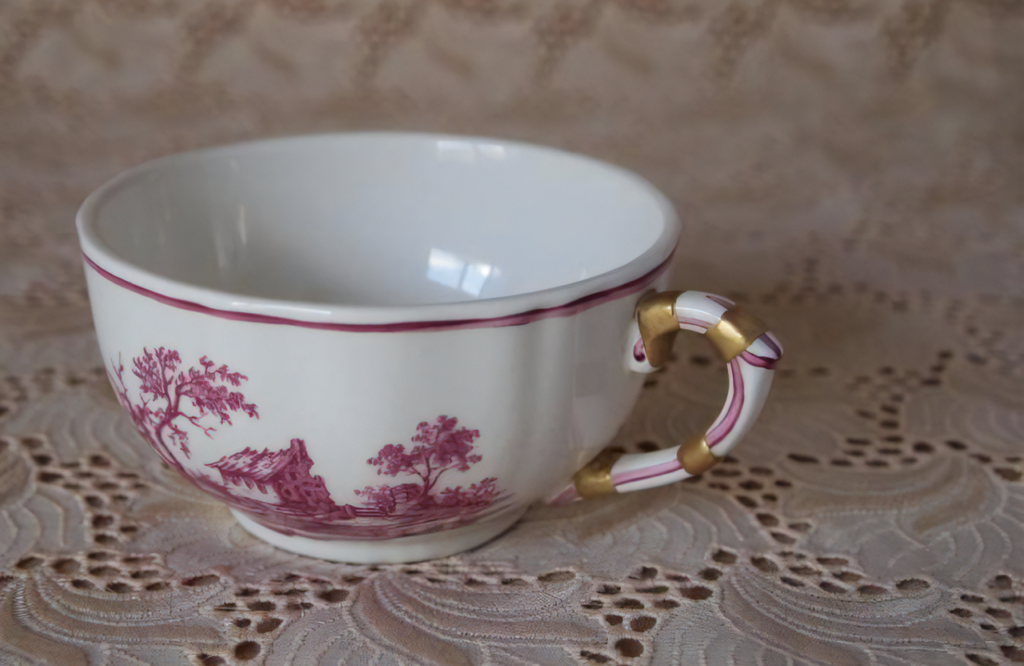
Advantages of modern kintsugi:
1. Accessibility: No need for special tools or expensive materials; common adhesive and gold paint can suffice.
2. Convenience: Easier to learn and quicker to complete than traditional Kintsugi.
3. Cost: Lower cost due to not using expensive materials like gold powder or lacquer.
4. Allergy Safety: No risk of allergic reactions from urushi lacquer, which is used in the traditional method.
Disadvantages of modern kintsugi:
1. Durability: May be less durable than traditional repairs, especially for items used daily, with potential lower water and heat resistance.
2. Not always Food Safe: Many adhesives and putties used are not compliant with food safety regulations, requiring the search for food-safe materials for dish repairs.
3. Appearance: Without real gold powder, the appearance may not be as luxurious as traditional Kintsugi, with the finish quality heavily dependent on the materials and technique used.
4. Cultural Value: While traditional Kintsugi is celebrated for its cultural and historical significance, modern Kintsugi may be seen as lacking in these aspects.
Ⅴ.Ideal Situations for Modern Kintsugi
Modern Kintsugi is an excellent option for beginners who are interested in Kintsugi but lack the time, skills, or special materials required for traditional methods. This technique, which can be started with simple materials, is suitable for those who wish to learn the basics of Kintsugi or enjoy DIY projects at home easily. Additionally, Modern Kintsugi is particularly well-suited for items that are not intended to be reused as dishware, such as vases, display plates, or decorative items where food safety is not a concern but enhancing visual appeal is desired.
For dishware use, many Modern Kintsugi materials do not meet Food Safe standards, hence traditional Kintsugi is recommended. However, for repairing items to enhance decorative appeal or personal value, Modern Kintsugi is ideal. Using adhesive mixed with gold powder on broken parts can add new beauty and interest to the original item.
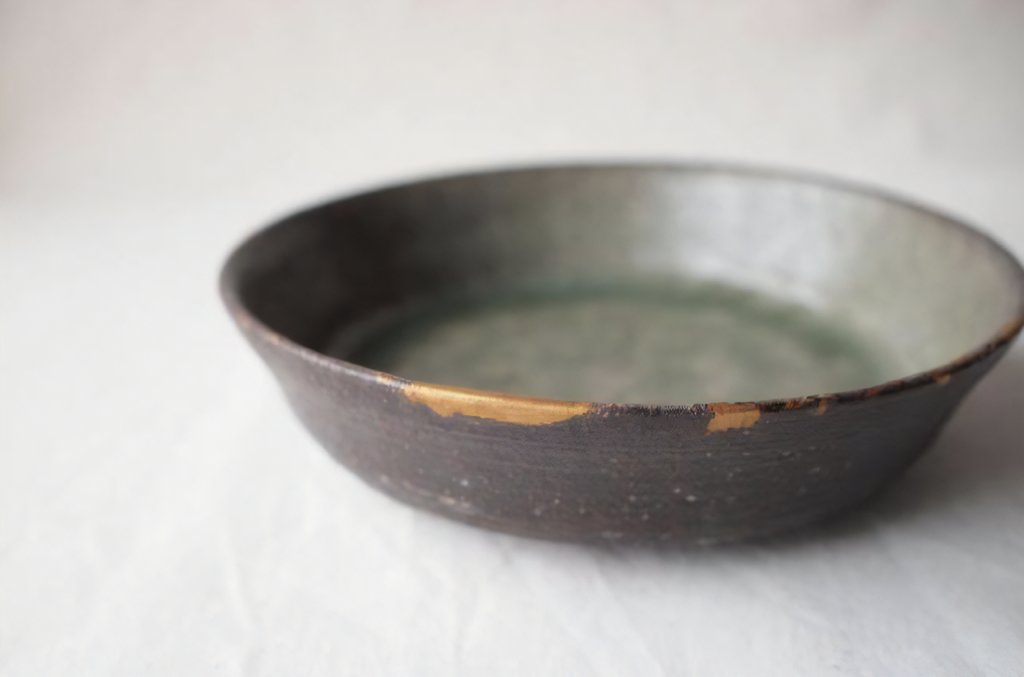
Moreover, Modern Kintsugi offers advantages in terms of time and cost. Materials can be acquired at relatively low cost, and the repair process can be completed quickly. Therefore, it is also suitable for those who want immediate results or enjoy the repair process itself.
Overall, Modern Kintsugi is an ideal choice for those taking their first steps into the world of Kintsugi, those constrained by time or resources, and those considering repairing non-food items for decorative value. This method allows broken ceramics to be transformed into unique artworks.
Ⅵ.Basic Steps of Modern Kintsugi
Modern Kintsugi offers a more accessible approach than traditional Kintsugi, using the following basic steps. This process involves using gold-colored powder or adhesive instead of actual gold or silver, allowing for beautiful restoration of broken ceramics.
Explained here is a method that mixes gold powder or gold-colored powder with synthetic resin instead of using traditional lacquer, using a quicker-drying synthetic resin. The basic steps are outlined below, with further research recommended for more detailed information.
Necessary Materials:
-Gold powder or gold-colored powder
-Synthetic resin (e.g., epoxy resin)
-Mixing container
-Mixing stick or spoon
-Broken ceramics or glass items
-Fine sandpaper
-Cleaning cloth
Steps:
(1) Preparation: Clean and dry the broken area. If necessary, smooth the edges with fine sandpaper and remove any dust or dirt.
(2) Adhering Broken Pieces: Use adhesive to carefully bond the broken pieces together.
(3) Preparing Synthetic Resin: According to the synthetic resin instructions, mix the resin and hardener in the correct ratio in a mixing container.
(4) Adding Gold Powder: Add gold powder or gold-colored powder to the synthetic resin. The intensity of the color can be adjusted by the amount of powder added.
(5) Mixing: Mix everything until uniform. It’s important to move to the next step before the resin begins to harden.
(6)Application: Carefully apply the mixed material to the broken area. For small cracks or damage, using a fine tool or the back of a toothbrush to press the material in can be helpful.
(7)Drying: It can take several hours to 24 hours for the resin to fully harden. Follow the instructions provided.
(8)Finishing: After hardening, trim any excess resin and smooth the surface. If desired, additional gold powder can be applied to the surface for extra shine.
Points to Note
It’s important to choose adhesives and paints that are safe for use with dishes, especially for parts that may come into contact with food. Choose products that are non-toxic and meet food safety standards.
While repaired ceramics may have increased decorative value, they may not fully recover their original strength for daily use. Especially avoid using them for hot items or in dishwashers and microwaves.
Modern Kintsugi is an artistic restoration method that breathes new life into broken ceramics. Its ease of use makes it a fun project for DIY enthusiasts.
Ⅶ.FAQ
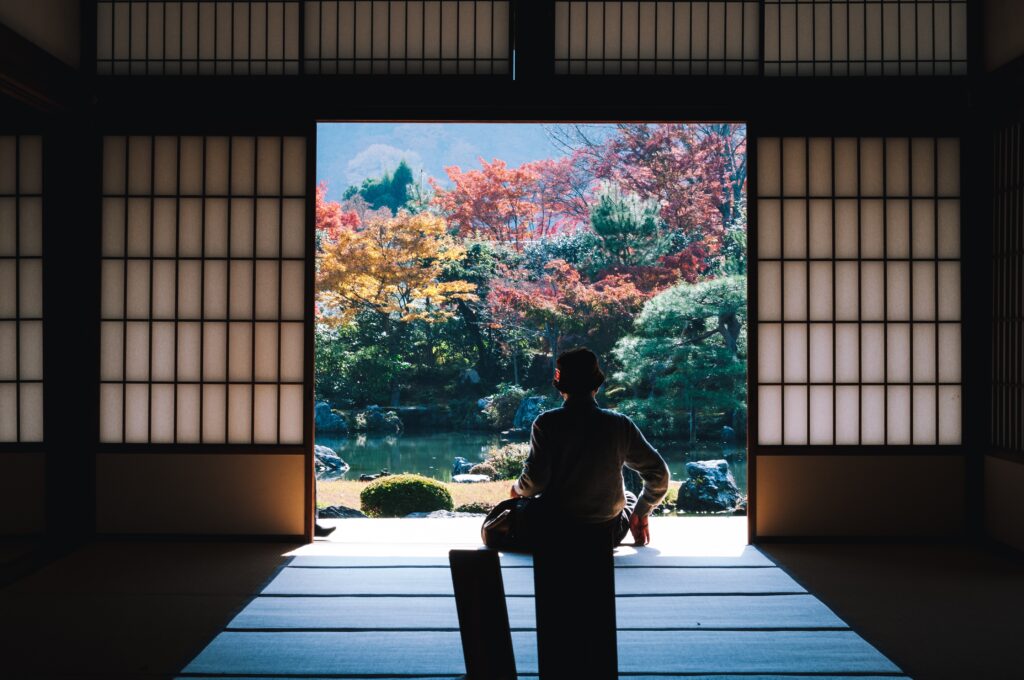 1. How long does modern Kintsugi take?
1. How long does modern Kintsugi take?
– The time required for modern Kintsugi varies depending on the size of the item and the extent of the damage but usually takes a few hours to a day. However, the drying time of the adhesive or resin used also affects this, so it may take 24 to 48 hours to fully harden.
2. Where can I find the materials needed for modern Kintsugi?
– Necessary materials can be found at hardware stores, online shops, or craft stores. Specifically, you’ll need synthetic resin (such as epoxy resin), gold powder or gold paint, a mixing container and stick, fine sandpaper, and a cleaning cloth.
3. Is an item repaired with modern Kintsugi safe to use as dishware?
– If the adhesive or resin used complies with food safety standards, it can be safe for dishware use. However, not all products are food-safe, so always check the label when selecting products.
4. Are there any precautions for washing items repaired with modern Kintsugi?
– Hand washing is recommended. Hot water and detergents may affect the adhesive or resin. Avoid using a dishwasher and gently wash with a soft sponge.
5. What type of damage is suitable for modern Kintsugi?
– It is suitable for small cracks, chips, and fine lines. However, repairing large damages or items broken into many pieces may be more complex and time-consuming, so professional restoration services might be a better option.
6. Is the gold powder used in modern Kintsugi real gold?
– The gold powder commonly used in modern Kintsugi is not pure gold but often gold-colored pigments or alloys. Using real gold powder is possible, but it significantly increases the cost. Synthetic gold powder is commonly chosen for its appearance and cost-effectiveness.
7. Can I change the color of the repaired part after modern Kintsugi?
– Once the adhesive or resin has hardened, changing its color is difficult. It’s important to consider the final appearance when selecting materials. However, applying additional paint to the surface can alter the color, but use materials suitable for food safety if necessary.
Conclusion
Our lives are filled with broken ceramics and crafts too precious to discard. Traditional Kintsugi is a wonderful way to repair and add new beauty to these items, but it can be challenging due to technical barriers, time, and cost. Modern Kintsugi, gaining attention as a contemporary repair method accessible to everyone, addresses these challenges.
This article detailed the differences between traditional and modern Kintsugi, the benefits and drawbacks of modern Kintsugi, and basic steps. Without needing special tools or materials and being relatively quick to complete, modern Kintsugi can breathe new life into broken ceramics, creating unique beauty.
If your cherished items are damaged, discovering new value through modern Kintsugi and enjoying their use again might be worth considering. Moreover, modern Kintsugi serves as a perfect gateway to the more authentic experience of traditional Kintsugi, should you find its charm and decide to delve deeper.

